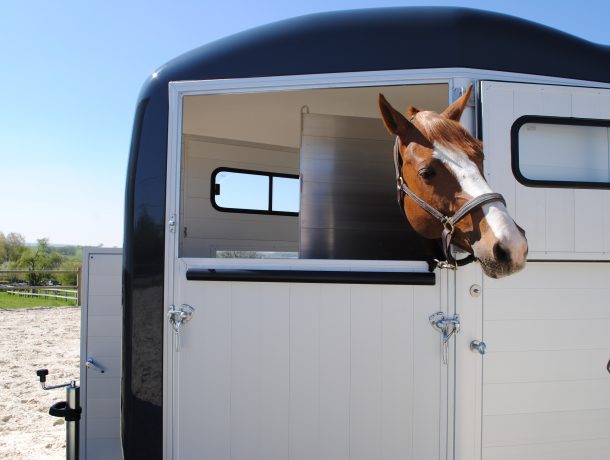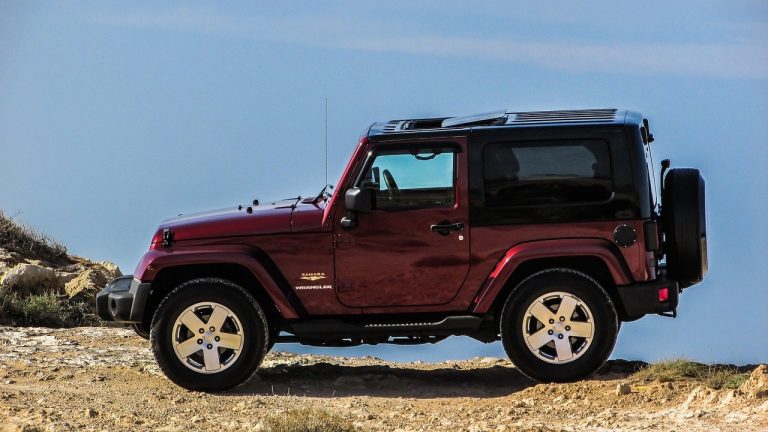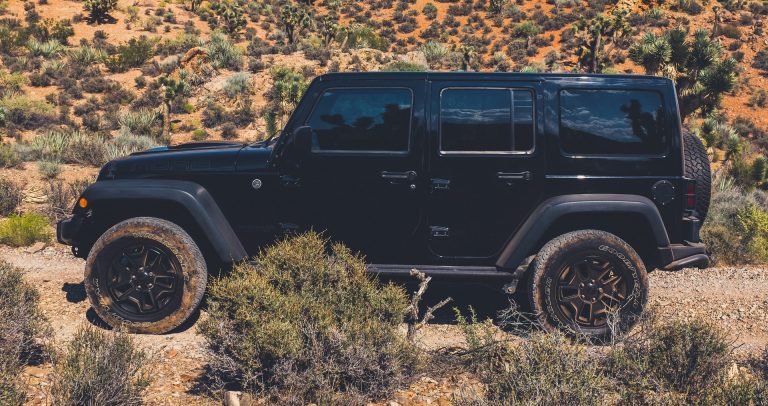Can A Jeep Wrangler Pull A Horse Trailer?
When you think about a Jeep Wrangler, hauling a horse isn’t usually the first thing that comes to mind. But can a Wrangler effectively haul a horse trailer? The answer is yes, but there are some caveats.
The model of Jeep, type of trailer, and the number of horses will have a lot to do with the answer. Let’s jump into the details.
Table of Contents
- How Much Can a Jeep Tow?
- Horses and Horse Trailers
- How to Set Up your Jeep for Towing
- Safety Measures when Towing a Horse Trailer
- Types of Horse Trailers
- Conclusion
How Much Can a Jeep Tow?
Let’s dive right into one of the main factors: the towing capacity. Standard 2-door Jeep models can handle up to 2,000 pounds. On the other hand, standard 4-door models can take 3,500 pounds. This applies to most Jeep models, especially Wranglers.
If we go for stronger models like Liberty, Commander, Gladiator, or Grand Cherokee, these numbers go up to 5,000-7,500 pounds. Now that’s what we call a beast! These models can handle almost everything you set them up for.
This means that whatever model of Jeep you have, you will be able to tow more or less weight. But you can definitely pull a small horse trailer even with the standard models.
Warning: To be sure how much your Jeep can handle, please refer to the user's manual of your specific model. This is very important. You don't want to overload your vehicle since doing so could cause a fatal accident.
Keep in mind that these numbers are for the total weight. This means that you will have to calculate the trailer’s weight, the weight of the horse, and any accessories you may need. Additionally, you will also need to consider what’s inside the car (people and cargo) and rest it from the towing capacity to stay safe.
This is referred to as GCWR (Gross Combined Weight Rating) in mechanical jargon.
Horses and Horse Trailers
There is a wide variety of horse trailers in the market. Most of them allow you to transport one or two horses, but some models allow for more.
However, since the Jeep’s capacity is limited, you might want to stick to trailers for one or a maximum of two horses. These trailers tend to weigh on average 1,500 or 2,000 pounds.
Now, it is also essential to know how much your horses weigh. On average, adult horses weigh between 400 and 1,000 pounds.
With these two numbers in mind, you can now calculate which option suits your Jeep without overloading it.
Also, keep in mind that the horses will need to be tied for their safety. They might also need hay if the journey is long. And you might want to take the harnesses with you too and store them in the trailer.
All of this counts towards the towing weight.
How to Set Up your Jeep for Towing
If this is the first time you are towing with your Jeep, there are a few aspects to monitor. First, it is not just as easy as attaching the trailer and driving. You will need to follow a few steps and also adapt your driving style.
Installing a Hitch
As you may have noticed, many Jeep models come with a hitch. However, many other models don’t. If yours doesn’t have a hitch set, you will need to install one.
Ideally, a professional should do this for the following reasons:
- A professional will do no damage to the car or trailer during the installation.
- A professional installation will not void the Jeep’s warranty.
- A professional will be able to suggest the best hitch model compatible with your Jeep.
Yes, this option will be more expensive than DIY. However, you might damage the Jeep and void the warranty if you do it on your own without expertise.
Expect anything between $50 and $400 for the set + installation.
Additional Features and Wiring
Aside from installing the hitch, there are a few features you want to set up before you tow a heavy trailer.
- Sway Control: since the horses might move and the horse trailer is usually relatively high, you will need a sway control hitch. Wind gusts will be noticeable with such a tall trailer, and they can become quite dangerous.
- Wiring for Brakes: since you are carrying live creatures, you definitely want to be able to control the brakes of the trailer. When installing the hitch, ask the mechanic also to wire the brakes. It will give you better control over the trailer.
- Wiring for Lights: some states require this by law. However, it is crucial to connect your trailer’s lights, even more so if you plan on driving at night.
- Transmission Cooler: By loading your Jeep to its maximum GCWR (Gross Combined Weight Rating), you will be adding a lot of pressure to the transmission. It is easy to get it overheated in this case. To prevent this and ensure a safe driving experience, we recommend installing a transmission cooler.
Safety Measures when Towing a Horse Trailer
Now that your Jeep is ready to tow, you need to follow a few steps to ensure your own safety and the safety of your horses.
- First of all, the way your Jeep feels will change immensely. So, you will need to adapt your driving style. We suggest that you practice driving and maneuvering your car in a secure location. For example, on your street or in an empty parking lot.
- Ideally, you shouldn’t drive faster than 60-70 mph when you tow a trailer. Even more so, a trailer with alive animals.
- Take your time to brake. Try to avoid sudden strong brakes. In addition, try to avoid slippery roads or off-road trails while you tow a trailer.
- Some tunnels or toll stations have maximum height limits. Make sure you know in advance the height of your trailer so you won’t get stuck.
- You might need insurance for your trailer. Ask an insurance broker in your state to know what is necessary.
Types of Horse Trailers
There are three main types of horse trailers, which can then be subdivided into two more categories. Even though we will cover all three in this article, keep in mind that you might not be able to tow some of them.
Living Quarter
Let’s start with the biggest one. As you may imagine, being the biggest option, it is highly probable that you won’t be able to tow this one with a standard Jeep.
Living Quarter Horse trailer, as its name states, is designed to serve as a long-term home to your dear horses. These trailers are perfect for those that make a living with their horses as a business. These trailers have an area for the horses as well as a living area for people, including a kitchen, bathroom, and bedroom.
Gooseneck
Another big option and primarily designed for trucks. The Gooseneck Horse Trailer can carry more than three horses at once. Because of its size, it is very stable and easy to maneuver. However, it is not a match for a Jeep.
Bumper Towed
This is the smaller trailer option and is perfect for Jeep owners. It can usually carry up to three horses, but remember, that might be too much for the Jeep. This type of trailer is affordable and easy to install.
Now that you know all three types, you need to understand another vital factor for your horses’ comfort: the way you load them on the trailer.
Most smaller trailers, such as the bumper towed ones, will use a “Straight load.” What does it mean? The horses will enter the trailer straight from the back door, and they will stand side by side facing the vehicle.
The other preferred option for bigger trailers such as the gooseneck or living quarters is the “Slant Load.” In this case, horses will still travel side by side but diagonally instead of facing the vehicle. And depending on the size of the trailer, they will access it from the rear door or an additional side one.
Conclusion
Depending on the model of Jeep, you will be able to tow a bigger or smaller horse trailer. For an easy calculation of which trailer is compatible, we have prepared a little summary here:
- First, find out your Jeep’s model’s maximum towing capacity and GCWR (Grossed Combined Weight Rating).
- Then, calculate the weight of the cargo inside the Jeep and of the people that will join you on the trip.
- Next, calculate the total weight of the trailer, horses, and all their accessories.
If the sum of numbers 2 and 3 do not exceed number 1, then you’re good to go!
Remember to drive safely, and make sure to leave a comment if you have any questions!


![The Best Ball Joints for Jeep Wrangler JK [2022 Buyer’s Guide]](https://149759752.v2.pressablecdn.com/wp-content/uploads/2022/04/onx-offroad-hsvJRhhTOGw-unsplash-768x512.jpg)

![How Did Jeep Get Its Name? [4 Interesting Theories]](https://149759752.v2.pressablecdn.com/wp-content/uploads/2022/04/jeep-gdc3eba019_1280-768x576.jpg)


